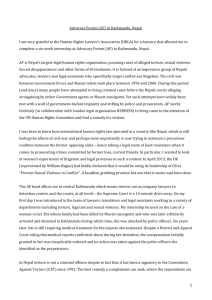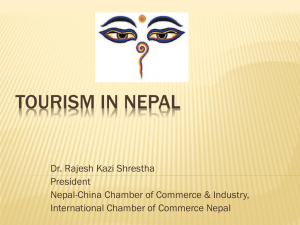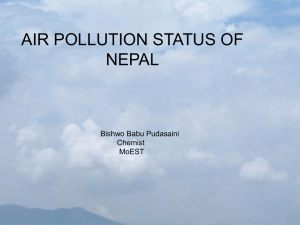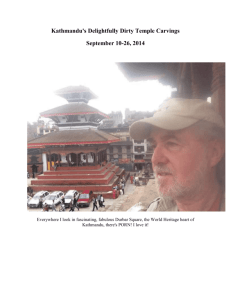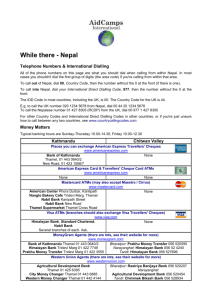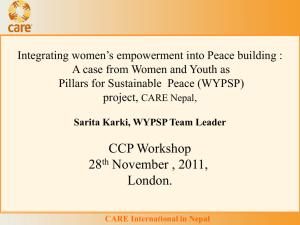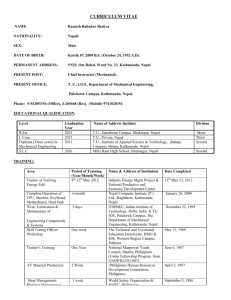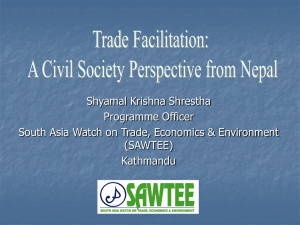ancient history
advertisement
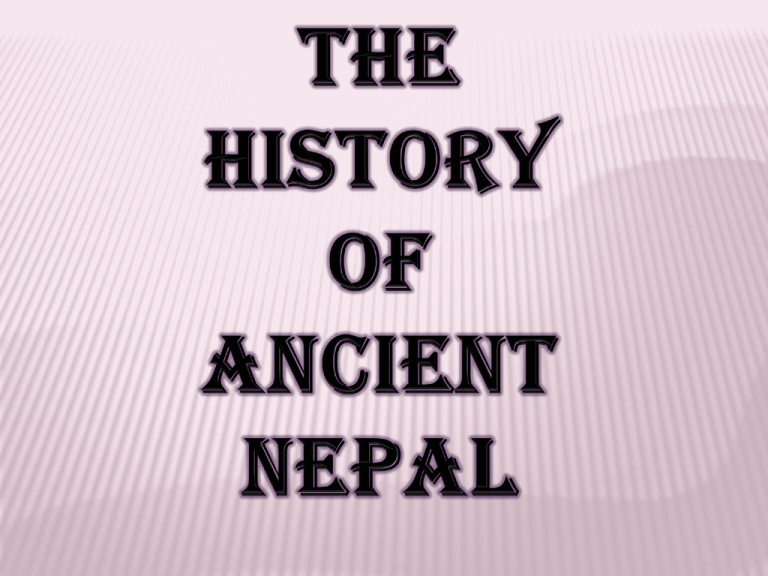
INTRODUCTION Historically, culturally and linguistically Nepal has been the meeting point between the Mongoloid peoples of Asia (with Tibeto-Burmese languages) and the Caucasoid people of the Indian plains (with Indo-European languages). • In earlier times, Nepal exploited its position as an intermediary in the trade between India and China. •Legends recount that the Kathmandu Valley was once a great lake and that Manjushree broached the Valley wall with a magical sword, draining the water and creating the Kathmandu Valley we know. •Or perhaps it wasn’t manjushree; he was after all, a buddhist from China. • THE EARLY KINGDOM OF THE LICCHAVI (400-750) It is estimated that between roughly 400 and 750 AD, the area now known as Kathmandu valley was ruled over by the Licchavi kingdom. After the downfall of Soma dynasty, the Lichchhavi period began in the history of Nepal They brought with them the caste divisions which continue in Nepal to this day but also ushered in a golden age of Nepalese art and architecture. It is thought that the Licchavis migrated to Nepal from northern India in about 250 AD, but it took some time for them to establish a Kingdom here. LICHHAVI KINGS No complete, reliable chronology of Licchavi rulers yet exists. Jaya Dev I was the first king of this line. He defeated Vasker Verma of soma dynasty and established Lichchhavis dynasty. Some of the famous kings of Licchavi dynasty are as below: A. Mana Dev: The first historical king of Nepal. He suppressed the feudal chiefs of the east and west and also conquered Mallapuri. He minted Manaka coin and constructed Managriha the new palace for him. B. Ansuverma: He was not belonged to Lichchhavi dynasty, though was a famous king of the period. He suppressed the powerful Guptas (Courtiers) a malla. He introduces various reforms. He constructed Kailash Kut Bhawan. C. Jaya Dev II : He was the last famous king of Lichhavi dynasty. He did very well reformation in the part of social and political, different types of taxes, art and architecture, trade and commerce. The rule of Mandeva was the important period of existence of Lichhavi kingdom. The genealogy of early lichhavi is reflected in the poem of budhakirti The contradiction in gopal rajavamshavali became one of the major argument Vishvadeva is characterized as virtuous king with his constructions like swayamnhunath and trishula. The last Licchavi inscription was in A.D. 733. All of the Licchavi records are deeds reporting donations to religious foundations, predominantly Hindu temples. The Licchavi were ruled by a Maharaja ("great king"), who was aided by a prime minister, in charge of the military and of other ministers. Entering into the book of history mandev was the first lichhavi king ruling kathmandu during gautam buddha's time. He made the documents information regarding politics, society and economy in kathmandu and they were mainly written in sanskrit. Anshuverma was recorded as a man of many talents by chinese traveler huen tsang. Bhrikuti spread buddhism to tibet and china . King narendra dev initiated friendly relation with china and india. One of the main contributions of Nepal during licchavi period was the transmission of Buddhist culture to Tibet and all of central Asia. The Licchavi Dynasty in Nepal accomplished much for the country and its people Late in the eighth century, By 879 CE the Newari era had begun and the Licchavi Dynasty had come to a complete and final end.

